#jiaxing
Explore tagged Tumblr posts
Text


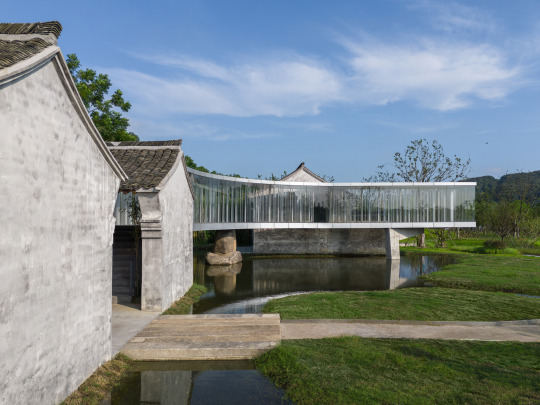

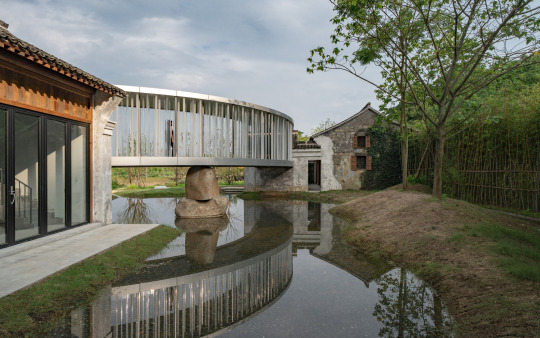


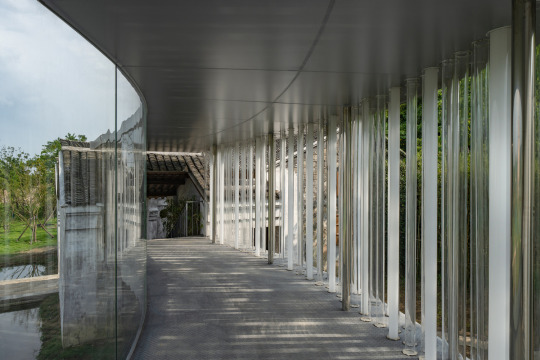

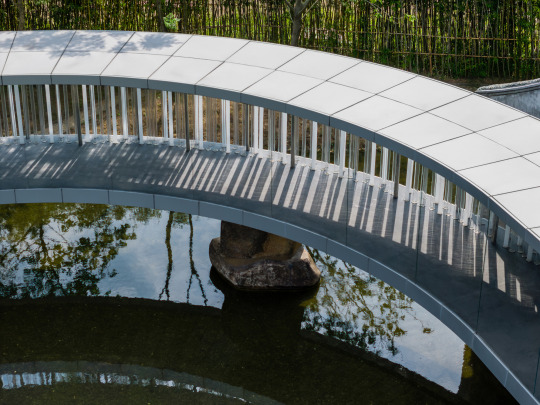


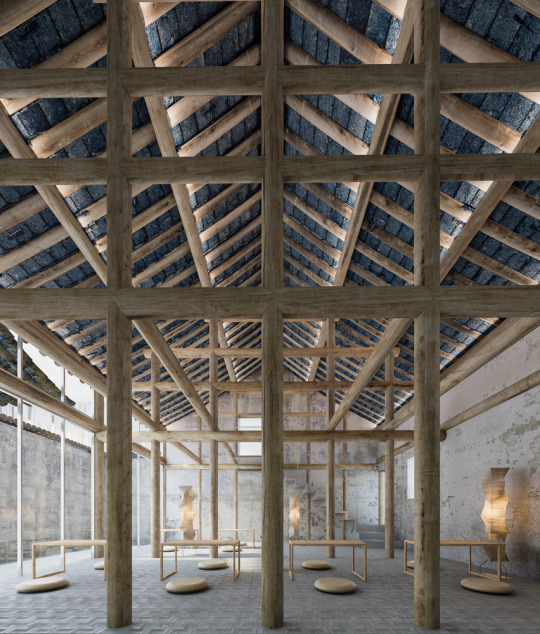
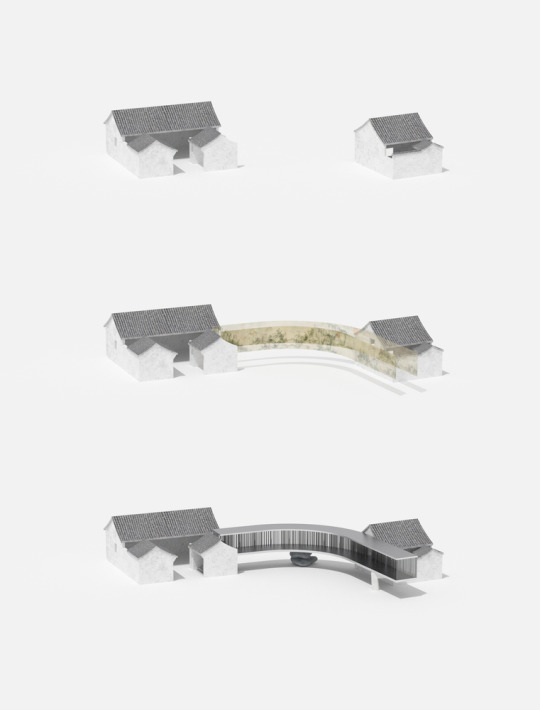
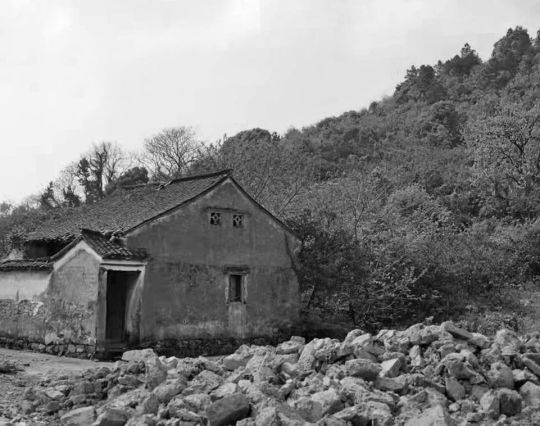
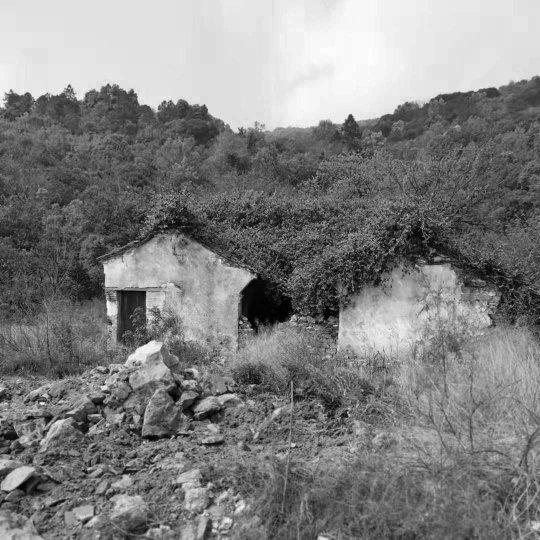
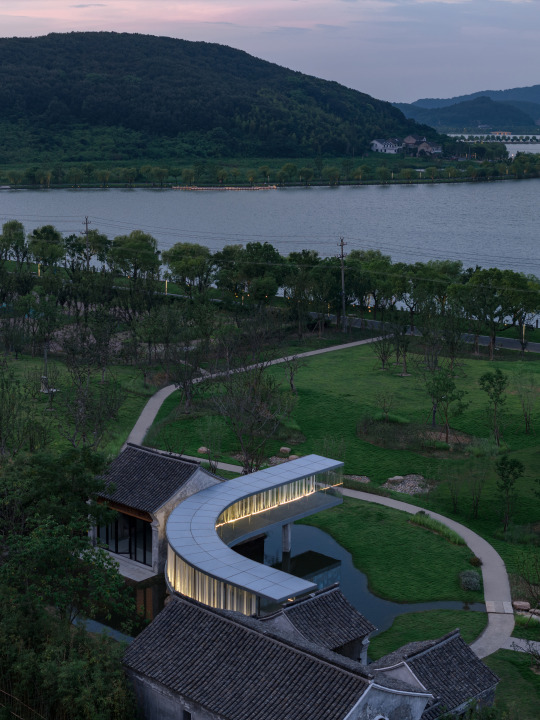
Lakeside Teahouse, Jiaxing, Zhejiang Province, China,
DOMAIN architects,
Photo Credit: Zhang Chao
#art#design#architecture#travels#interiors#renovation#tea house#china#lakeside#jiaxing#zhejiang#domain
161 notes
·
View notes
Text
Wuzhen, a historic water town located in the south of Jiaxing City, Zhejiang Province, China (x).

914 notes
·
View notes
Photo


Granblue Fantasy by jiaxing shang
3K notes
·
View notes
Text





transplanting these characters to another setting because i don't even play on the roleplay thing they're from oogh
9 notes
·
View notes
Photo




jiaxing shang
QQ 978461926
artstation
More from «Artstation» here
3 notes
·
View notes
Text




Pa xiu de huang ying (1960)
3 notes
·
View notes
Text
Jiaxing Yiborun Import and Export Co., Ltd. Leathaire Fabric Manufacturers
Leathaire Fabric, also called Tech Microfiber Cloth, Nano Tech Cloth, has the leathery feel of artificial leather, but not PU leather. It is usually prepared by 28 needles high-speed warp knitting machine with less than 0.1mm elastic filament as raw material, and has 100,000 micro breathable holes per cubic meter. It has become a fabric that breathes. The surface layer is mainly PU resin infiltration coating, base cloth fabrics through complex technology processing, to realize the advantages and sensibility with similar leather, while making up for the shortcomings and shortcomings of the leather.

0 notes
Text
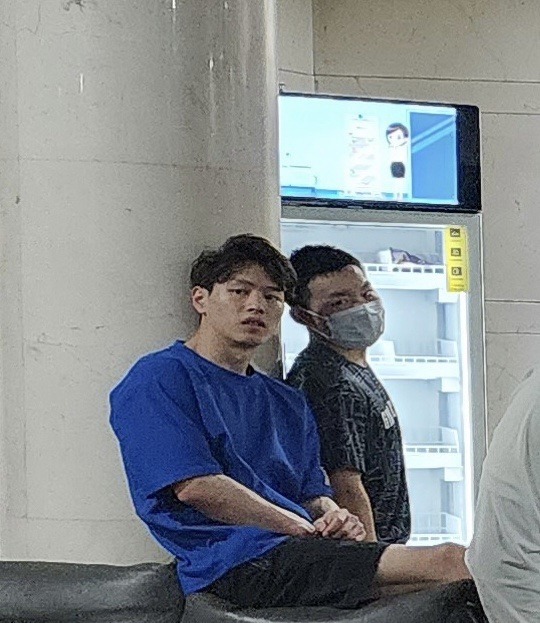
AC team off to Sgp last night and Haonan was there seeing them off. I know it’s probably bc 2 of his ZJ teammates were going and he’s there for them. (Xie replaced him) But I can’t help but wondering if he maybe for a second thought about all the would’ve should’ve could’ve’s.
I couldn’t make which hand was injured in the pic. He looked batter than I thought he’d be. The apocalypse phase’s probably gone already. He’s so cute even behind a mask. It’s actually really nice of him to wear one bc there’s been a mini Covid surge inside the team after nats also I assume he went to the hospital quite frequently these days so he wears mask to protect others health.
Get well soon, baby. It’s painful and devastating, but you have to.
#I miss him and his gymnastics so much#😢#there’s been more injuries inside the team I think Jiaxing’s injured too#he was supposed to go#but in the final list he’s replaced by Ta Yinga#Poor team 🇨🇳#at the beginning of 23 they’re so confident that they gonna get 2 very promising teams to compete both AG and WC#now they can’t even put together a team for Universiade in July#I’m just relieved that Haonan wasn’t sent back to ZJ#he’ll get better medical care and recovery process in Beijing
0 notes
Text

















Çin, Şanghay.
Beijing'den yüksek hızlı trenle 3,5 saatte geliyoruz. İki şehir arası 1.214 km.
Emperyalist Batılı güçlere meydan okuma merkezi.
Şanghay, Çince ‘denizin üstünde’ anlamına geliyor.
1800’li yılların sonundan itibaren İngiltere, Fransa ve ABD, şehirde kendilerine özel imtiyaz ve güvenlik bölgeleri kurmuş.
Emperyalist Batılı güçlere 20. yüzyılda Japonya da katılınca şehir tamamen sömürgeleştirilmiş.
Bu dönemde Çinliler şehrin kuzeyinde yaşıyor.
Yabancıların olduğu bölümlere girmeleri kolay değil. Ancak özel izinle olabiliyor.
Fakat şimdi burası Batı'ya meydan okuma merkezi.
Avrupa bankalarının işgal ettiği ‘Dış sahil kordonu’nda bugün Çin bankalarının merkezi binaları yer alıyor. Şanghay’ın ticaret hacminin büyümesi genelde ‘patlama’ kelimesiyle anlatılıyor. Bölgede sadece bir bölümün gayri safi yurt içi hasıla, 3,4 trilyon dolar.
Türkiye'nin hacmi 1,2 trilyon dolar. Siz hesaplayın...
Kent bugün gökdelen sayısı bakımından dünyada beşinci sırada.
En görkemli yapısı, Doğu’nun İncisi Kulesi.
Yaklaşık 468 metre yüksekliğinde. Üzerine çıkıp 360 derece şehri görebiliyorsunuz. Ayrıca yolunuz düşerse Şanghay rıhtımında gece nehir seyahati yapmanızı öneririm.
Doğu’nun İncisi Kulesi'nin tabanında Şanghay Tarih Müzesi'nden seçilmiş parçalar var. Seçilmiş parçalar var dediğime bakmayın, o kadar büyük ki, saatlerinizi harcayabilirsiniz. Özellikle maketler ve maketlere kurulan hologram sistemleriyle, eski günler canlandırılıyor.
Çin müzecilikte gerçekten çok ileri gitmiş. Dijitallikle gelenekseli birleştiren çok yaratıcı sunumları var.
Müzede Çin tarihini ve sosyal yaşamı ayrıntılarıyla bulabiliyorsunuz.
Çinli komünistlerin kalesi
Şangay’ın Çin tarihi için çok özel bir yeri var.
Çin Komünist Partisi (ÇKP)'nin 23 Temmuz 1921'de ilk ulusal kongresini yaptığı bina Şanghay’da bulunuyor.
İki katlı tuğla binada gizlice düzenlenen kongre Fransız işgal güçlerince fark edilince parti yöneticileri arka kapıdan kaçıyor ve bir tekneyle Zhejiang eyaletinde bulunan Jiaxing şehrine doğru yol alıyorlar ve ÇKP’nin ilk kongresini denizin üzerinde daha sonra “Kızıl Tekne” alını alacak olan bu teknede tamamlıyorlar.
Grup, gemiyi kiralamak için o dönem fena bir para olmayan sekiz gümüş sikke harcıyor ve büyük davalarını özel olarak görüşmek üzere Nanhu Gölü'nün merkezine yelken açıyorlar. Mao Zedong’un da aralarında bulunduğu ÇKP’nin ilk lider kuşağı, yanlarından bir polis devriye gemisi geçtiğini düşündükleri bir anda gerçek niyetlerini gizlemek için turist gibi davranarak o dönem bir zengin eğlencesi olan ve Çin dominosu olarak da bilinen “mahjong” bile oynuyorlar. Polis devriyesi geçtikten sonra grup “Komünist Parti çok yaşa!”, “Üçüncü Enternasyonal çok yaşa!” diye sessizce bağırarak bu sisli denizde ÇKP’nin doğuşunun temellerini atıyorlar.
Hatta Mao'nun İkinci Kongre için şehre geldiğinde kaybolduğu ve kongreye katılamadığı da anlatılıyor.
ÇKP yönetimi binayı ve çevresini 1952 yılında anıtsal bölgeye dönüştürmüş. 3 yıl önce de toplamda 3.400 metrekarelik bir sergi alanı oluşturulmuş. Burada ÇKP tarihini yansıtan 1100’ü aşkın eser sergileniyor.
Burada da dijital gösteriler çok dikkat çekiyor.
Biz geldiğimizde, Çin Komünist Partisi'nden gençlerin yeminine de tanıklık etmiş olduk.
Akşam da Nanjing caddesinde geziyoruz.
Burada da sokaklar tertemiz, şehir hareketli, taksiler ucuz, insanların yüzünden mutluluk akıyor.
Daha sonra Şıncın'a geçiyoruz...
#china#shanghai#şanghay#bund#Doğu'nun İncisi Kulesi#Orient Pearl Tower#东方明珠广播电视塔#上海#travel#gezi#china communist party#ccp#mao zedong
31 notes
·
View notes
Text

Mutina is a minimalist space located in Jiaxing, China, designed by Moye Design. Light filters through a 9-meter glass curtain wall, casting ever-shifting patterns across raw concrete surfaces. This interplay of shadow and illumination is no mere aesthetic choice – it’s the animating principle of Mutina’s first independent showroom in China, where Moye Design has reimagined the ceramic tile showroom as a living gallery of material poetry.
13 notes
·
View notes
Text

From Knots to Quantum: A Cultural and Mathematical Transformation
Shiing-Shen Chern was born in Jiaxing, China, in 1911, during a time of great change and upheaval in his homeland. From an early age, he displayed a remarkable aptitude for mathematics, and his journey in the world of differential geometry began at Nankai University and Tsinghua University, where he laid the foundation for his future academic endeavors. Chern's education took him to Germany, where he pursued his graduate studies at the University of Hamburg under the mentorship of Wilhelm Blaschke. It was here that Chern's passion for geometry flourished, and his doctoral research on the theory of webs marked the beginning of a brilliant career in mathematics.
Chern's contributions to differential geometry are vast and profound. He made significant advancements in the calculus of variations, the theory of differential forms, and the study of characteristic classes. His most celebrated achievement, the Chern-Weil theory, provides a powerful framework for constructing and understanding characteristic classes, which are essential tools in algebraic topology and differential geometry. The introduction of Chern classes revolutionized the study of complex manifolds and algebraic varieties. These classes capture the topological and geometric intricacies of these spaces and have become indispensable in various branches of mathematics. Chern's proof of the generalized Gauss-Bonnet theorem further solidified his place among the greatest geometers.
Beyond his mathematical prowess, Shiing-Shen Chern played a pivotal role in fostering mathematical exchange and collaboration between China and the Western world. In the mid-20th century, as China emerged from a period of isolation, Chern became a key figure in re-establishing mathematical connections with the international community. Upon his return to China in the 1980s, he took on the task of revitalizing mathematical research and education. Chern founded the Mathematical Research Institute of the Chinese Academy of Sciences, which became a hub for mathematical excellence and international collaboration. His vision and leadership attracted mathematicians from around the world, fostering a vibrant and diverse intellectual environment.
Chern's dedication to nurturing the next generation of mathematicians is evident in his establishment of the Nankai Institute of Mathematics at Nankai University and his later contributions to Zhejiang University. Through these institutions, he inspired and mentored countless students, many of whom became leading mathematicians.
Shiing-Shen Chern's influence extends far beyond pure mathematics, significantly impacting the field of Topological Quantum Theory (TQFT). TQFT is a fascinating area of mathematical physics that explores the connections between topology, geometry, and quantum mechanics, and Chern's contributions have been instrumental in its development.
Chern-Simons theory stands as a testament to the deep interplay between geometry and quantum theory. Named after Shiing-Shen Chern, Simon Donaldson, and James Simons, this topological quantum field theory is a masterpiece in mathematical physics. Chern-Simons theory assigns complex amplitudes to manifolds and knots, relying on the Chern-Simons form, a differential form derived from the curvature of connections on principal bundles. The Chern-Simons action functional, a central object in the theory, captures the geometric and topological aspects of manifolds, providing a powerful tool for understanding quantum systems. This theory finds applications in various areas of physics, including knot theory, quantum gravity, and condensed matter physics, offering insights into topological phases of matter.
Chern's work on characteristic classes, particularly the Chern classes, has been instrumental in the study of topological invariants, which are crucial in TQFT. These invariants remain unchanged under continuous deformations of manifolds and play a vital role in classifying topological phases. Chern classes, along with other characteristic classes, provide a rich toolkit for constructing and analyzing these topological invariants. The Chern-Simons invariant, derived from Chern-Simons theory, is a prime example with far-reaching implications. It distinguishes different 3-manifolds and connects to knot invariants like the Jones polynomial, which are of great interest in TQFT.
Chern's contributions to differential geometry have also influenced the study of quantum states and their geometric properties. The geometry of the space of quantum states, known as the projective Hilbert space, has become an important research area in mathematical physics. Chern's work on complex geometry and Kähler manifolds provides valuable insights into the structure of these spaces and their associated geometric invariants. Additionally, the concept of Berry phases in quantum mechanics, arising from the geometric properties of quantum state spaces, is connected to Chern's work on connections and curvature. These geometric phases find applications in quantum computing and quantum information theory.
The interplay of mathematics, history, and cultural exchange is captured in the documentary "Taking the Long View" by George Paul Csicsery. The film portrays Chern's life, his enduring legacy, and the tapestry of his contributions to mathematics and the cultural exchange between East and West.
Taking the Long View - The Life of Shiing-shen Chern (George Paul Csicsery, 2000)
youtube
Knots have been an integral part of human civilization for thousands of years, dating back to ancient times when they were used for practical purposes such as sailing, fishing, and weaving. However, the systematic study of knots as a mathematical discipline is a relatively modern development that has evolved over the centuries, intertwining with various scientific and intellectual pursuits.
In ancient civilizations like Egypt, Greece, and China, knots were used for practical purposes, such as securing objects, creating fishing nets, and recording information. The ancient Inca civilization in South America even developed a sophisticated system of recording information called "quipu," which used knotted strings to encode numerical data and possibly even more complex information.
During the Renaissance, knots continued to play a role in various crafts and trades, but the mathematical study of knots as a distinct field was not yet established..
The 19th century saw significant advancements in mathematics and physics, and it was during this time that knot theory began to take shape as a mathematical discipline. One of the pioneering figures in this field was the Scottish physicist and mathematician Peter Guthrie Tait. In the 1870s, Tait and his colleagues, including Thomas Kirkman and C.N. Little, embarked on a project to classify all possible knots with a given number of crossings. This effort, known as the "Tait Conjecture," aimed to create a table of knots and links, which would serve as a foundation for understanding their properties.
Tait's work laid the groundwork for the systematic study of knots, and he is often considered one of the founders of knot theory. He introduced the concept of "alternating knots" and developed techniques for distinguishing and classifying knots based on their diagrams.
In the early 20th century, mathematicians continued to build upon Tait's work and made significant contributions to knot theory. James Waddell Alexander II, a prominent American mathematician, introduced the concept of "knot invariants," which are mathematical quantities that remain unchanged under various deformations of a knot. These invariants provided a powerful tool for distinguishing and classifying knots.
Another influential figure during this period was Max Dehn, a German mathematician who made important contributions to the study of three-dimensional manifolds and knot theory. Dehn introduced the concept of "Dehn surgery," a technique for modifying three-dimensional spaces by cutting out and gluing back solid tori, which has deep connections with knot complements and the topology of three-dimensional spaces.
The mid-20th century witnessed a revolution in physics with the development of quantum mechanics. Surprisingly, this new branch of physics would have profound implications for knot theory. In the 1980s, the discovery of the Jones polynomial by Vaughan Jones, a mathematician working in the field of operator algebras, marked a significant turning point.
The Jones polynomial is a knot invariant that assigns a Laurent polynomial to each knot or link. It was initially discovered in the context of von Neumann algebras and subfactors in quantum physics, but its significance for knot theory was quickly recognized. The Jones polynomial provided a powerful tool for distinguishing knots and led to the development of other knot polynomials, such as the HOMFLYPT polynomial, which further enriched the theory.
The connection between knot theory and quantum physics deepened with the emergence of topological quantum field theories, mathematical models that describe the behavior of quantum systems in terms of topological and geometric properties. Edward Witten played a pivotal role in this development.
Edward Witten's foray into knot theory began in the late 1980s, a period marked by significant advancements in mathematical physics. Witten, already renowned for his contributions to string theory and quantum field theory, turned his attention to the intricate world of knots and links, seeking to understand their topological and geometric properties. Witten's interest in knot theory was not merely academic; he sought to uncover the deep connections between knot theory and quantum physics.
Shiing-Shen Chern's work in differential geometry and topology provided a crucial foundation for Witten's exploration of knot theory. Witten's groundbreaking insight was to relate Chern-Simons theory to knot invariants, such as the Jones polynomial. He showed that the Jones polynomial could be obtained from Chern-Simons theory, providing a physical interpretation for this important mathematical object.
Witten's exploration of knot theory has led to a deeper understanding of the role of knots and links in quantum field theory. He has studied the behavior of quantum fields in the presence of knotted configurations, revealing the intricate interplay between topology and quantum phenomena. This research has opened up new avenues for understanding the mathematical structure of quantum field theories and their connection to knot invariants.
Witten's research has explored the geometry of quantum state spaces, known as projective Hilbert spaces. He has used geometric and topological concepts, such as Kähler manifolds and Berry phases, to understand the structure and behavior of quantum systems in these spaces. This work builds upon Chern's contributions to differential geometry and topology, particularly in the study of complex manifolds and their geometric properties.
By building upon Chern's mathematical foundations, Witten has revealed the deep connections between geometry, topology, and quantum phenomena, opening up new avenues for research and a deeper understanding of the mathematical structure of the physical world.
Prof. Edward Witten: Knots and Quantum Theory (Institute for Advanced Study, April 2012)
youtube
Wednesday, October 9, 2024
10 notes
·
View notes
Text
China's GQ event officially announced its guest list and yup Taylor's going!!!
A few things about the event (I sped through the announcement live stream mostly just to hear Taylor's announcement)
The event is on 7th December, and the live stream of the event starts at GMT+8 1700
It will take place at Zhejiang(province) Jiaxing(city)'s water town (where the town is built along the river, something like this)

The event won't have a typical red carpet: instead, guests will arrive on boats (which...wow)
"This is a pretty special guest, especially in the midst of a crowd of mainland stars. If you guys watched a very sweet, different and bizarre movie this year called 'Red white & Royal Blue', he's the 'president's son'" - My translation of the host's own introduction to Taylor (the Chinese phrase he used for "bizarre" is an... odd one. it's a neutral term though)
"He let us learn that a cake can be made into a tree. He made us learn that it's okay to smear cake all over a suit. He let us learn that someone else's cake is tastier." - My translation of the cringy official tagline/ intro for Taylor (I swear to God it's this, yes it's fucking weird and I'm questioning why is it so fucking cringe)
The host also said he's really excited to see what Taylor, as an international/foreign star, looks on the "water carpet" will be
yeah that's all the info from the announcement, if there are any more updates I'll definitely try to catch up and post them (exams are killing me but honestly RWRB is more important to me now lmao)
#rwrb#red white and royal blue#rwrb movie#taylor zakhar perez#alex claremont diaz#rwrb rambles#I'm excited#and worried#especially with chinese celebrity culture and taylor being the only foreigner#I just really want him to have a good time#I don't know if I can watch the live stream of the event my exam is literally the next day#but we'll see#also the official intro#what the absolute fuck#I swear I'm not even hesitant on my translation that is literally what it says
30 notes
·
View notes
Text






sketches, commissions, personal doodles
6 notes
·
View notes
Text
"Is Shanghai cold right now? What clothes should I wear?"
(English translation of his first sentences)


Tzp on Red little book
Is he already preparing for his China GQ event in Jiaxing on December 7th? ☺
#he's BOOKED#taylor zakhar perez#tzp#red white and royal blue#rwrb#rwrb movie#firstprince#alex claremont diaz
24 notes
·
View notes
Text

Zhou Bichu - Jiaxing Misty Rain Pavilion
12 notes
·
View notes


